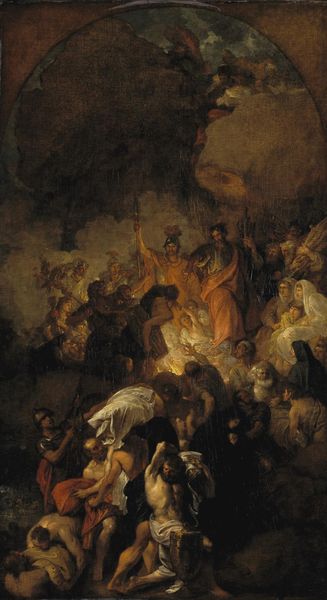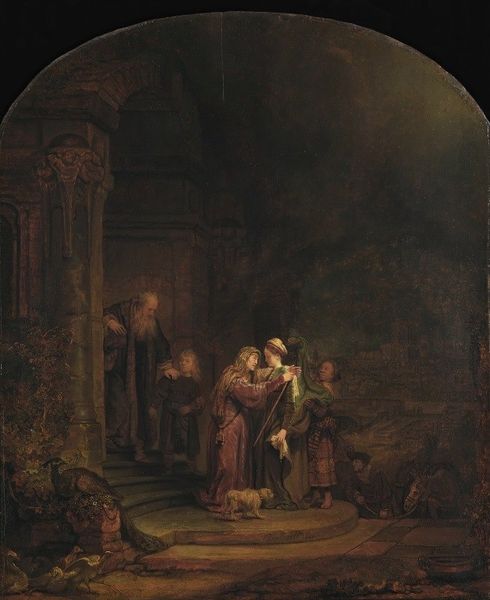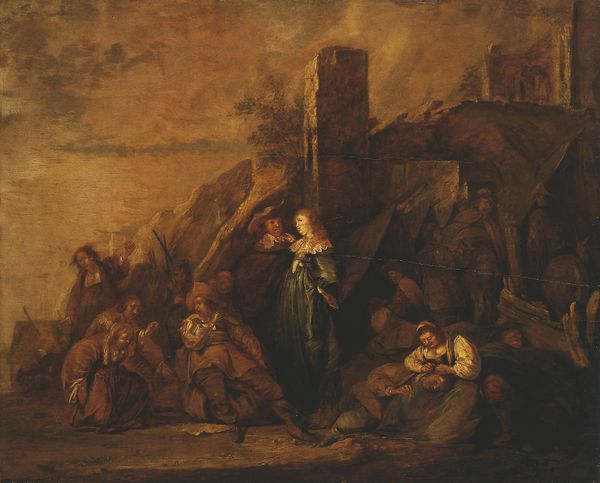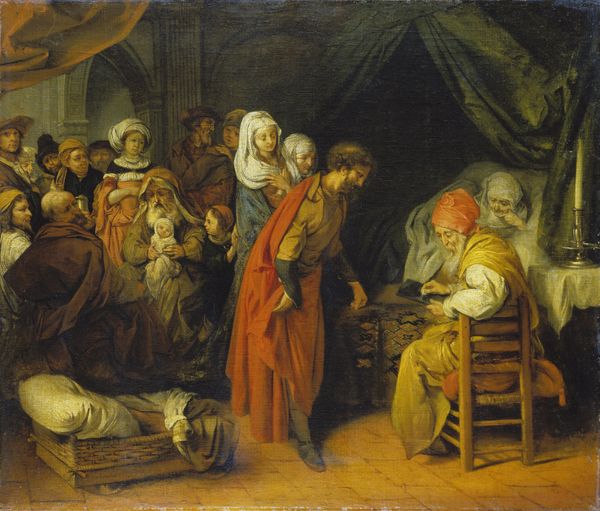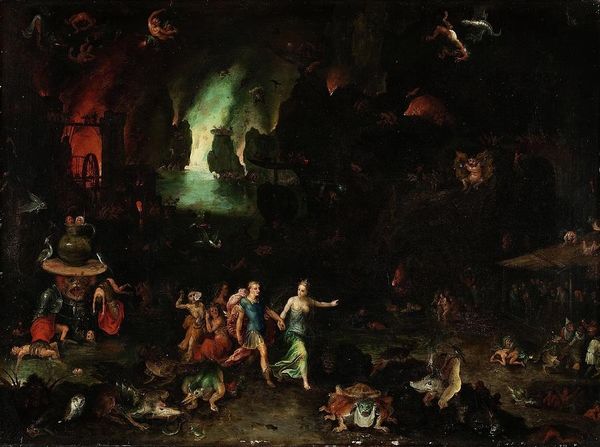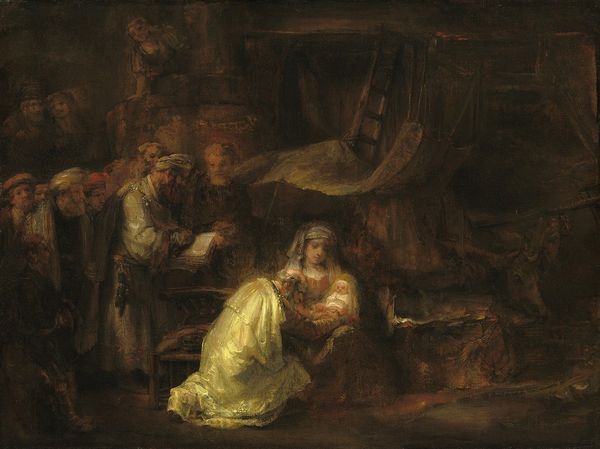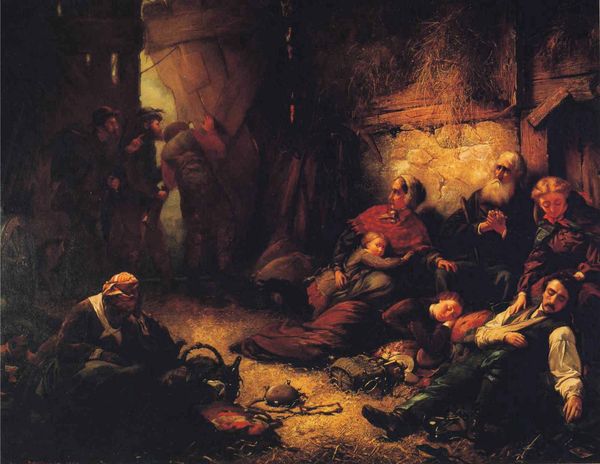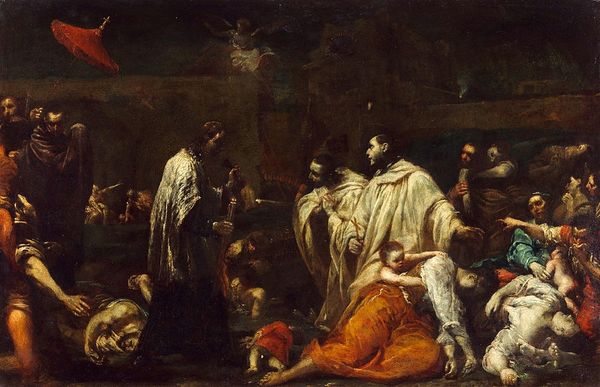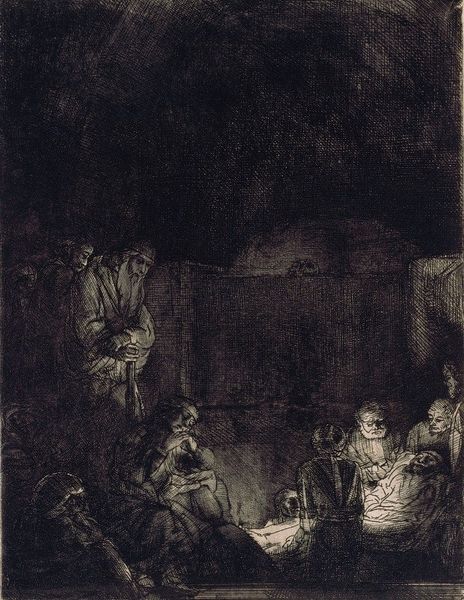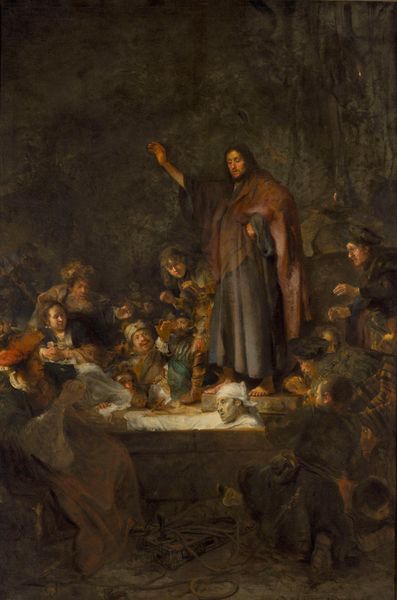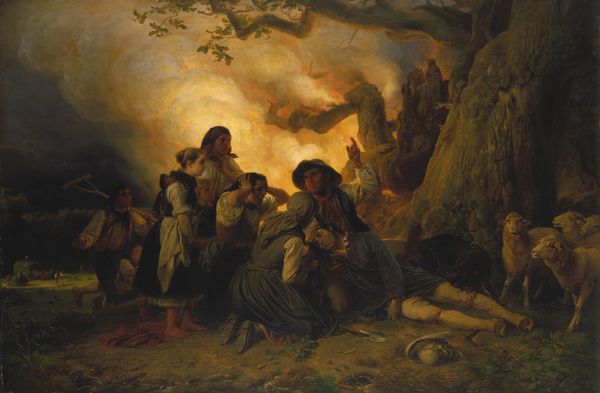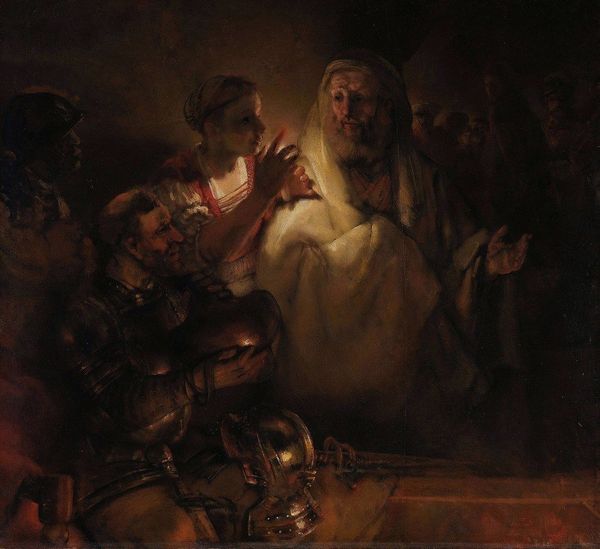
painting, oil-paint
#
narrative-art
#
baroque
#
painting
#
oil-paint
#
figuration
#
oil painting
#
underpainting
#
painting painterly
#
genre-painting
#
history-painting
Dimensions: 81 x 66 cm
Copyright: Public domain
Salomon Koninck painted "The Adoration of the Magi" in oil on panel, capturing a biblical scene that was ripe with social meaning in the Dutch Golden Age. This painting is not simply a religious depiction, but a reflection of the period's cultural values and the evolving role of religious art. Painted during a time when the Dutch Republic was asserting its independence, the choice of this subject might be seen as a statement of faith. The composition, with its focus on the human interaction and the exotic garb of the Magi, suggests a society eager to engage with a wider world, even as religious tensions simmered beneath the surface. The art market in the Netherlands was booming, and artists like Koninck were tasked with creating works that spoke to the values and aspirations of a diverse and increasingly wealthy middle class. To fully understand this painting, it's essential to consider the religious and economic factors at play in 17th-century Netherlands, delving into period documents, theological debates, and the records of the artist's guild. The social and institutional context is key to unlocking its deeper significance.
Comments
No comments
Be the first to comment and join the conversation on the ultimate creative platform.
